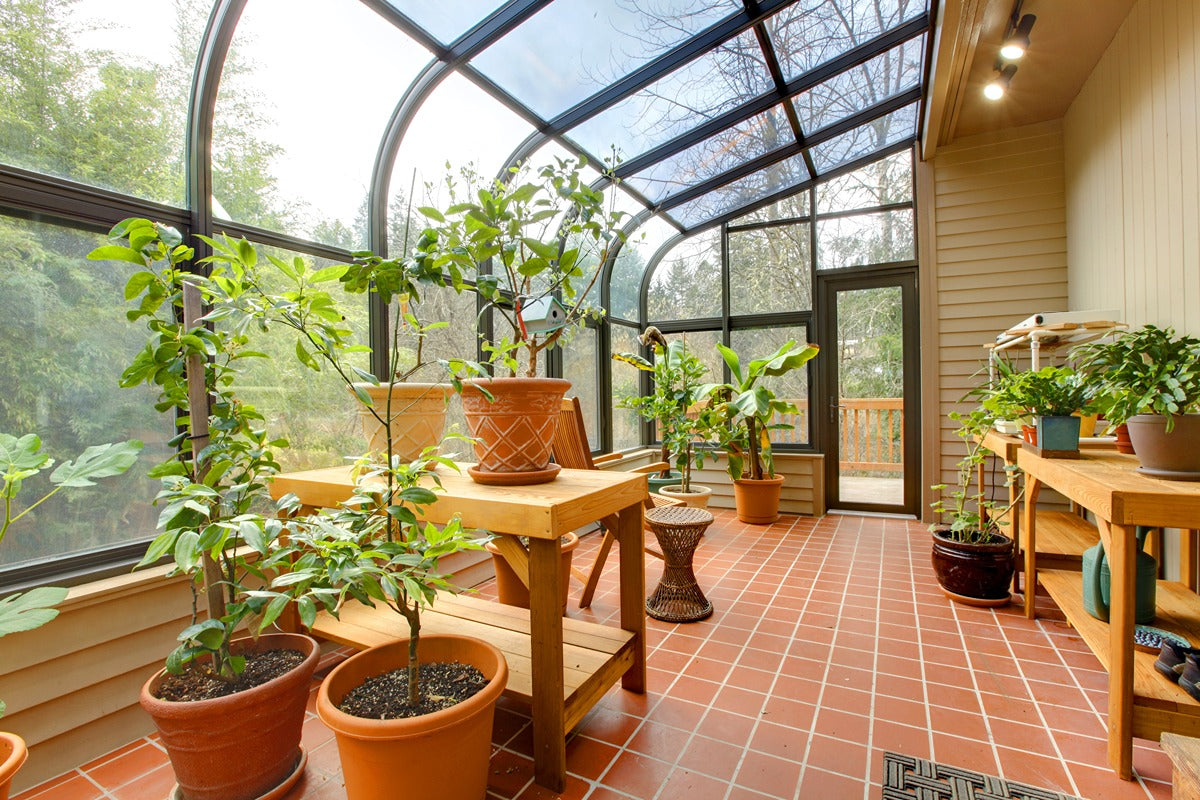1-800-540-905
Info@HomesteadSupplier.com
7am-4pm Pacific Time Mon-Fri
1-800-540-9051
Info@HomesteadSupplier.com
7am-4pm Pacific Time Mon-Fri
1-800-540-905
Info@HomesteadSupplier.com
7am-4pm Pacific Time Mon-Fri
1-800-540-9051
Info@HomesteadSupplier.com
7am-4pm Pacific Time Mon-Fri

How much sun does a greenhouse need? A greenhouse typically requires 6–8 hours of direct sunlight daily to support healthy plant growth and maintain internal warmth.
In this article, we'll explore the relationship between sunlight and plant needs, clarify what "full sun" means, discuss the benefits of full sun for greenhouses, and explain how full shade works.
Plus, we will outline sunlight requirements for various plants, provide strategies for maximizing sunlight in your greenhouse, and guide you on siting your greenhouse for optimal sun exposure.
What this article covers:
Sunlight is the primary energy source for plants, driving the process of photosynthesis, which is essential for plant growth and development. In a greenhouse setting, ensuring adequate sunlight exposure is crucial for maintaining plant health and achieving optimal yields.
Different plants have varying light requirements. For instance, fruiting vegetables like tomatoes and peppers thrive with at least 6–8 hours of direct sunlight daily, while leafy greens such as lettuce and spinach can tolerate lower light levels.
"Full sun" refers to an area that receives at least six hours of direct sunlight per day. In the context of greenhouses, positioning the structure to maximize exposure to full sun is vital for plant health and productivity.
Achieving full sun exposure involves strategic placement of the greenhouse, considering factors such as orientation and potential obstructions like trees or buildings that may cast shadows.
Positioning a greenhouse to receive full sun offers numerous advantages. Firstly, it enhances photosynthesis, the process by which plants convert light into energy, leading to healthier and more vigorous growth.
Secondly, full sun exposure helps maintain optimal temperatures within the greenhouse, reducing the need for additional heating sources, especially during cooler months.
In fact, many gardeners are surprised by how much warmer is a greenhouse compared to the outside environment, often reaching temperatures 10–20°F higher during sunny days
Full sun conditions can improve the quality and yield of crops. For example, fruiting plants like tomatoes and cucumbers develop better flavor and higher sugar content when grown under ample sunlight.
If you're looking to take full advantage of this, the EZ Fit Greenhouse is an ideal choice. Its translucent panels ensure excellent sunlight diffusion while the spacious design helps maintain warmth and airflow.
Our research indicates that full shade in a greenhouse context refers to areas that receive minimal to no direct sunlight due to obstructions or intentional shading. While some plants, such as certain ferns and orchids, can tolerate or even prefer low-light conditions, most edible crops require more light to thrive.
Implementing shading techniques, like using shade cloths or applying shading paint, can help manage excessive sunlight during peak summer months, preventing overheating and sunburn on plants.
The amount of sunlight required in a greenhouse varies depending on the types of plants being cultivated. Generally, most vegetables and flowering plants need at least 6–8 hours of direct sunlight daily.
In regions with shorter daylight hours or during winter months, supplemental lighting may be necessary to meet plants' light requirements.
Conversely, in areas with intense sunlight, implementing shading strategies can prevent plant stress and overheating.
Understanding how does a greenhouse stay warm naturally through solar gain and insulation can help reduce the need for supplemental heating, especially in temperate climates.
To maximize sunlight exposure in your greenhouse, consider its orientation and location. Situating the greenhouse away from shadows cast by trees, buildings, or other structures ensures unobstructed light access.

A high-efficiency greenhouse for maximizing natural light is the Little Cottage Company Colonial Gable Greenhouse Shed Kit. With its large vertical windows and steep roof pitch, this greenhouse is specifically designed to pull in generous sunlight year-round, while also providing aesthetic appeal.
Based on our observations, siting your greenhouse properly is essential for optimizing sunlight exposure. Positioning it with a north-south orientation in the Northern Hemisphere (or east-west in the Southern Hemisphere) maximizes sun exposure during the day and throughout the seasons.
Elevation and surrounding terrain should also be considered. Greenhouses on a slope should be oriented to face the sun directly, and flat sites should avoid low-lying areas prone to fog or shading.
Our findings show that technological innovations can improve how sunlight is used in a greenhouse. Automated shading systems adjust light levels throughout the day to prevent overheating and sun damage.
A common question among new growers is: does a greenhouse need a heater? The answer depends largely on location, plant types, and how well sunlight and insulation are utilized.
Other technologies include LED grow lights that supplement natural sunlight during shorter days or in overcast climates. Light sensors and smart controllers also enable precision management of lighting needs.
For gardeners seeking a modern-meets-natural build, the Cedarshed SunHouse Greenhouse Kit integrates traditional Western Red Cedar with polycarbonate panels and an integrated ventilation system, allowing for both passive solar heat and customizable climate control.
Creating an optimal light environment in a greenhouse starts with understanding how much sun is needed and how it affects plant growth. Whether you're working with full sun, partial shade, or full shade conditions, tailoring your approach to the specific needs of your plants ensures healthier, more productive outcomes.
From strategic placement and orientation to leveraging modern technology, every aspect plays a role in maximizing sunlight. By applying these insights, you can build a greenhouse system that supports robust plant growth.
Visit Homestead Supplier to turn your property into a paradise with one of our greenhouse kits.
If you want to learn more, why not check out these articles below:
Compare products
{"one"=>"Select 2 or 3 items to compare", "other"=>"{{ count }} of 3 items selected"}
Leave a comment